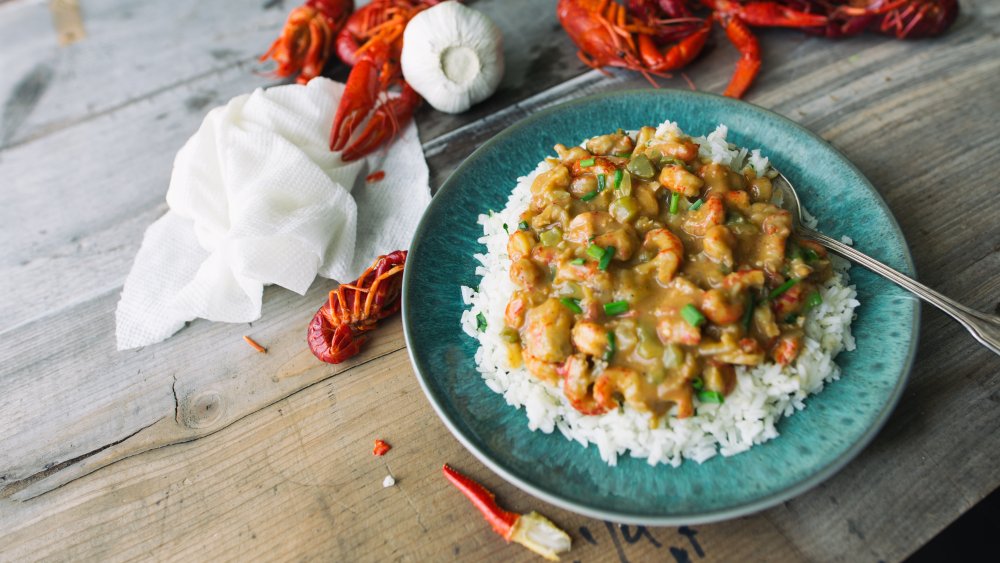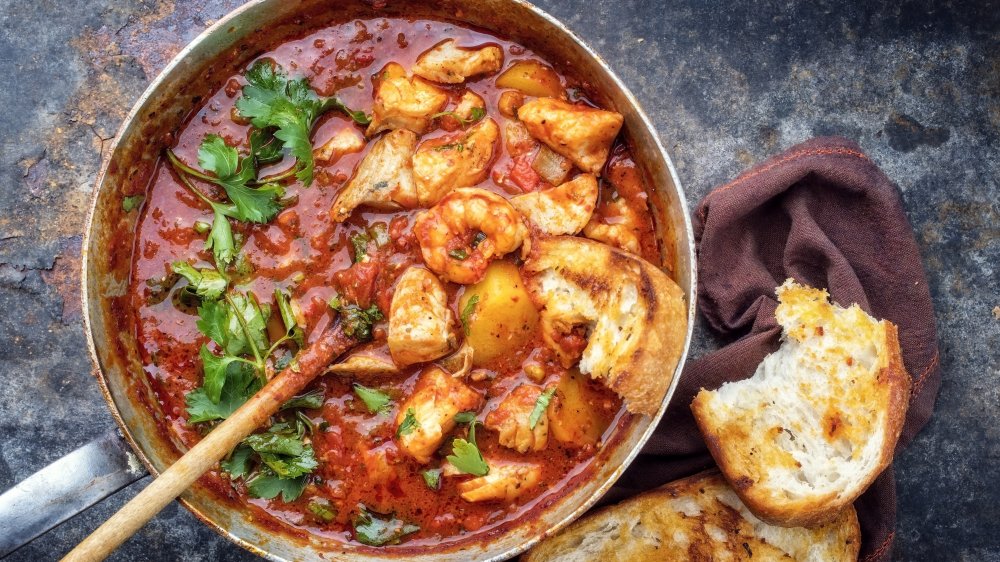What Is Etouffee And What Does It Taste Like?
Etouffee (pronounced "eh-too-fey") is deeply rooted in Louisiana culinary history. The word is derived from a French word meaning "to smother," and the dish is traditionally made with crawfish, which is transformed into a savory, rich, golden, thick stew, and served over rice (via New Orleans).
According to CajunCrawfish.com, the first crawfish etouffee was served in Louisiana's Hebert Hotel in the 1920s. Mrs. Hebert created her etouffee using crawfish tails, crawfish fat, onions, and pepper. Today, there are countless variations on etouffee, including those that use shrimp in place of crawfish, and cooks who choose to make thicker or thinner versions of their sauce. Depending on the restaurant serving the dish or the recipe you find for this southern staple, you may discover different proteins, rices, sauce bases, and levels of spiciness, according to Garden & Gun. Many etouffee traditionalists also say that the recipes that use tomatoes are Creole etouffee, and those without tomato are Cajun variations (via Taste of Home).
What etouffee tastes like and how it's made
If we had to compare etouffee to something, it has some similarities to gumbo. The recipe starts with a roux (pronounced "roo"), you use the same types of Creole seasonings, and the dish is served over rice. However, according to New Orleans, etouffee is usually made with a "blond" roux, which gives etouffee a lighter, sweeter color and flavor.
Traditionally, roux is used to thicken dishes, and is a simple combination of equal parts fat (butter, oil, bacon fat, pan gravy, etc.) and flour (via The Spruce Eats). White, blond, and brown roux are created depending on how long you cook the roux (white is shortest cook time and brown is longest). To make etouffee, once you've finished creating a roux, add celery, pepper, and onions, stirring until coated. Add in chicken broth, water, and Creole seasonings to your taste. Cover and simmer for 30 minutes, stirring occasionally. Add your crawfish (or shrimp), heat through, and serve over rice (via Taste of Home).

